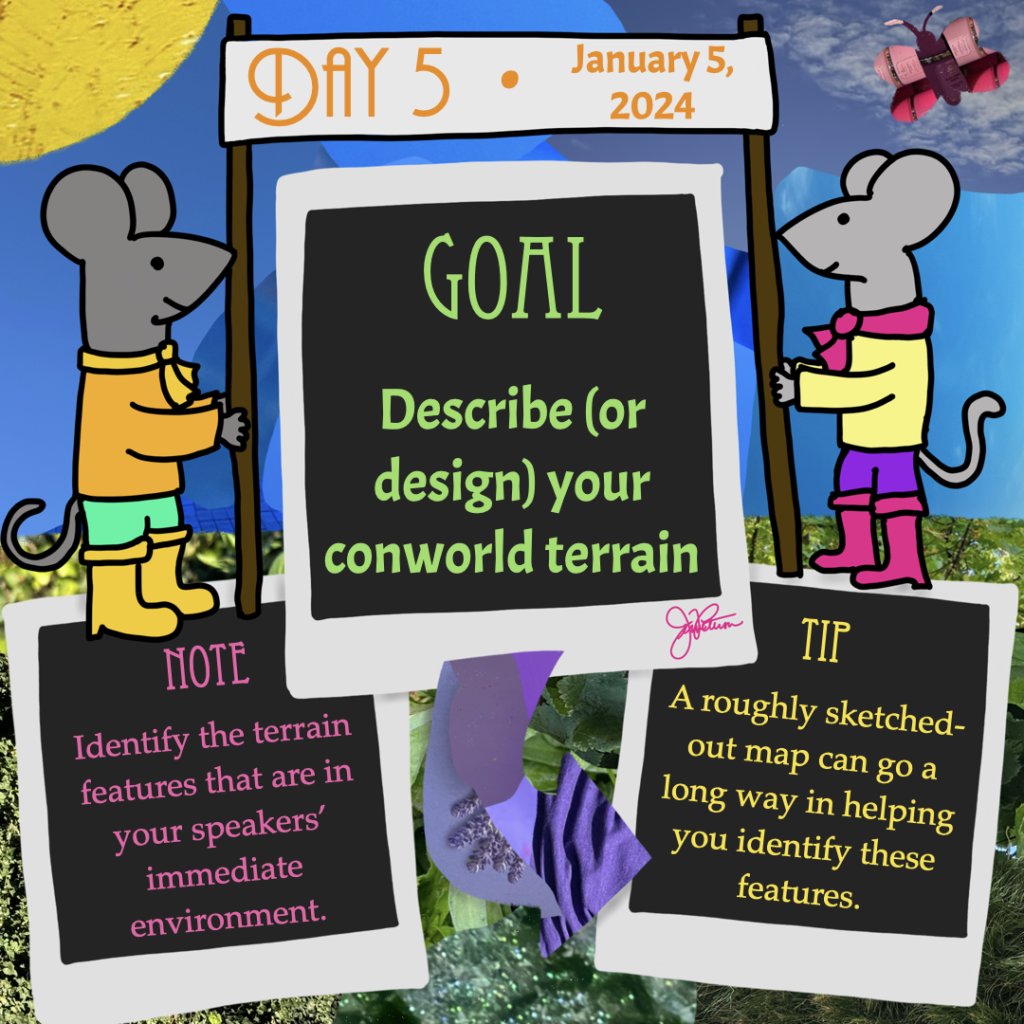
Goal: Describe (or design) your conworld terrain
Note: Identify the terrain features that are in your speakers’ immediate environment.
Tip: A roughly sketched-out map can go a long way in helping you identify these features.
Work focus: Create/Make/List
You selected a conworld for your speakers a couple days ago, but now you need to fill out some more details. When you fill out these features of the conworld, imagine the ancestors of your conspeakers as far back as they could be traced—the original speakers of the language that will eventually become the language spoken by your speakers in a later world. And now mentally put yourself in the body of one of those ancestors, standing (or floating, levitating, lying—whatever they can do idly as they perceive their world!) in the area they spend the majority of their time and describe what surrounds them, focusing on the physical features of the land/water/area.
For example, my conlang Zhwadi is for a community of human speakers who live in an area very much based on the woods that surrounded me in my childhood home. Putting myself in that world, I imagined what it must have been like to stand in those woods before people established long-standing structures (such as houses). The natural elements that would have been prominent features in that area included the woods themselves, of course, which are filled with trees and shrubs and other living things. But for this exercise, the goal is to focus on the terrain—the geography, the topology—of the area.
The terrain for my Zhwadi speakers is hilly with a lot of smaller water ways like creeks and rivers connecting areas and also a lot of standing water features, such as ponds, clay pits, and lakes. There are also natural springs with water bubbling up from below that feeds into the rivers. The water running through the land creates a lot of gullies and gulches. Because it is hilly, there are a lot of valleys where those hills meet, yet there are also areas of open meadows that are flatter or shallower. While there are large hills, there are no mountains visible from the area they live. The dirt has natural clay and softer shale in it, giving it a reddish tint when it is muddy (though not nearly as red as the dirt in the Pineywoods of Texas). The softer ground allows water underneath the surface to carve natural caverns, some of which are quite extensive. On top of the surface, large rocks (small boulders even) can be found scattered about in the forest, becoming features themselves in the terrain.
The map for my Zhwadi speakers is fairly limited. They move about in their area but are not nomadic, so I don’t need to sketch out details of the conworld beyond their immediate area for this particular exercise. Here the goal is to identify what early speakers of the language would see and interact with on a daily basis to set a solid foundation for building vocabulary later on.
You may want to start generating ideas for the plants and animals that share the environment with your speakers, but you can also save that for the upcoming prompts that ask you to fill out details of the flora and fauna of your conworld.
